Best CPAP Machine for Travel
CPAP machines have gone a long way in helping people with respiratory problems sleep through the night. They’re designed to compensate for the difficulties and pauses in breathing, by regulating the air intake through a “forced” dose. While it may sound strange, CPAP machines are very useful for conditions such as sleep apnea. We’re going to dive into some common CPAP-related problems and troubleshooting, and then talk about the most popular travel-sized CPAP machines.
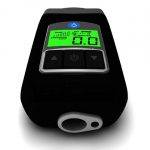
1. Human Design Medical Z1 Auto Travel CPAP – Editor's Choice
- Dimensions: 6.5 x 3.3 x 2 inches
- Weight: 0.6 pounds
- Battery: optional integrated battery
- Warranty: 3 years
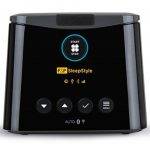
2. FISHER and PAYKEL SLEEPSTYLE
- Dimensions: 5.7 x 7.0 x 7.2 Inches
- Weight: 3.7 pounds
- Battery: optional external battery
- Warranty: 2 years
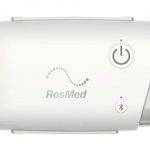
3. AirMini AUTO
- Dimensions: 5.4 x 3.3 x 2.1 Inches
- Weight: 0.66 ounces
- Battery: optional
- Warranty: 2 years

4. Philips DreamStation Go
- Dimensions: 5.9 x 5.9 x 2.2
- Weight: 1.9 lbs.
- Battery: optional integrated battery
- Warranty: 2 years
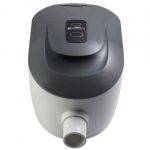
5. Transcend® 3
- Dimensions: 7.5 x 3.7 x 3.7 inches
- Weight: 1.09 pounds
- Battery: external battery sold separately
- Warranty: three years
Table Of Contents
- Top Travel CPAP Machine
- 1. Human Design Medical Z1 Auto Travel CPAP
- 2. FISHER and PAYKEL SLEEPSTYLE
- 3. AirMini AUTO
- 4. Philips DreamStation Go
- 5. Transcend® 3
- Common CPAP-Related Issues & Fixes
- Problem #1: I can’t get used to the forced air intake.
- Problem #3: I don’t know what mask to choose/I’ve chosen a mask that doesn’t suit me.
- Problem #4: I can’t get used to wearing a CPAP mask.
- Problem #5: The device is making too much noise.
- CPAP & Sleep Apnea
- Bottom Line
Top Travel CPAP Machine
1. Human Design Medical Z1 Auto Travel CPAP – Editor's Choice
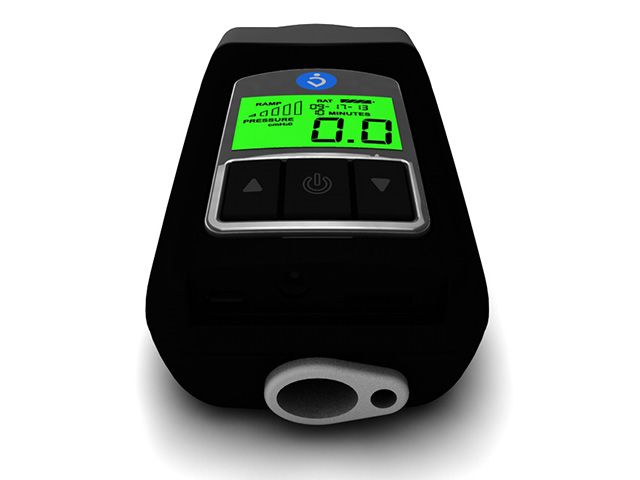
Highlights
- Dimensions: 6.5 x 3.3 x 2 inches
- Weight: 0.6 pounds
- Battery: optional integrated battery
- Warranty: 3 years
Pros
- Lightest option is available.
- Three-year warranty.
- App connectivity.
- Auto-adjusting.
- Ramp feature included.
Cons
- Battery sold separately.
For the ultimate portability in terms of CPAP machines, there’s the Z1 Auto Travel. It pretty much looks like a shaving device and one that fits into the palm of your hand. With just 6.5 x 3.3 x 2 inches in dimensions and a total weight of 0.6 lbs, this is the best option for those looking to travel as light as possible.
The device has a pressure range of 4 – 20 cmH20 and features a ramp time of 0 to 45 minutes. There isn’t an integrated humidifier, so it might not help those of you looking for a device with a dry-mouth solution. There is an optional battery integrated, and it connects with an app to gather sleep data that might help you share useful information with your doctor.
Additionally, you can purchase the PowerShell, which is a smart solution for everyone looking to get some extra battery juice.
2. FISHER and PAYKEL SLEEPSTYLE
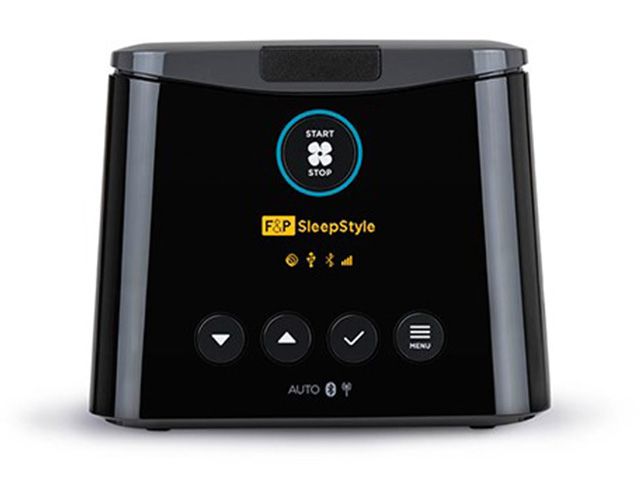
Highlights
- Dimensions: 5.7 x 7.0 x 7.2 Inches
- Weight: 3.7 pounds
- Battery: optional external battery
- Warranty: 2 years
Pros
- Easy to use.
- Automatic ramp mode.
- Easy to clean.
- Built-in humidifier.
- Comes with a carrying bag.
- App connectivity
Cons
- A bit heavier compared to other travel options.
For the ultimate portability in terms of CPAP machines, there’s the Z1 Auto Travel. It pretty much looks like a shaving device and one that fits into the palm of your hand. With just 6.5 x 3.3 x 2 inches in dimensions and a total weight of 0.6 lbs, this is the best option for those looking to travel as light as possible.
The device has a pressure range of 4 – 20 cmH20 and features a ramp time of 0 to 45 minutes. There isn’t an integrated humidifier, so it might not help those of you looking for a device with a dry-mouth solution. There is an optional battery integrated, and it connects with an app to gather sleep data that might help you share useful information with your doctor.
Additionally, you can purchase the PowerShell, which is a smart solution for everyone looking to get some extra battery juice.
3. AirMini AUTO
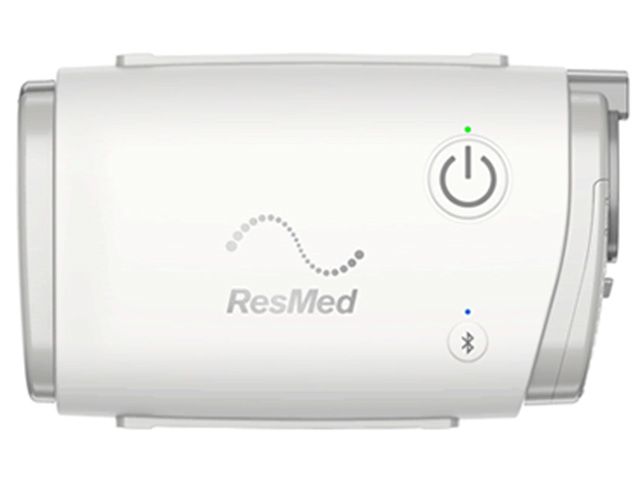
Highlights
- Dimensions: 5.4 x 3.3 x 2.1 Inches
- Weight: 0.66 ounces
- Battery: optional
- Warranty: 2 years
Pros
- Very compact and lightweight.
- App connectivity.
- Smartstart and autostop features.
- Expiratory pressure relief.
- Autoramp.
- Sleep detection.
Cons
- Can only be used with ResMed masks.
Have you ever heard of such a thing as “waterless humidification”? The AirMini is a portable CPAP machine that integrates a special system, which allows sleepers to get that moist air they crave for, but without the need for distilled water.
How does this work? There is a built-in filter that collects moisture and exhaled heat and uses them to put humidity back into the system.
But that’s not all this little fellow can go. It features Expiratory Pressure Relief, which makes the device adapt to your breathing cycle, to apply gentle pressure upon exhalation. It also has an auto ramp function, which delivers lower pressure while you’re still awake, and increases it as you drift off.
The device also has a smart auto turn-on system, which is activated as soon as there’s breathing detected in your mask. The AirMini will also turn itself off when to take the mask off. That makes it super-simple to use.
4. Philips DreamStation Go
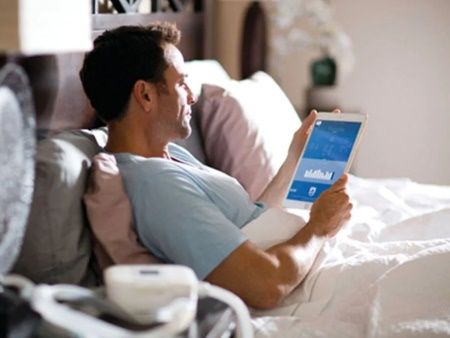
Highlights
- Dimensions: 5.9 x 5.9 x 2.2
- Weight: 1.9 lbs.
- Battery: optional integrated battery
- Warranty: 2 years
Pros
- Flexible tubing.
- USB charging port.
- Labeled for airplane travel.
- Easy to use.
- Integrated Bluetooth.
Cons
- Lack of humidifier integration.
- Travel bag & battery sold separately.
People trust brands, and that’s a fact. If you’ve been using Apple gizmos for the past decade, there’s a high chance of you being a fan of whatever gadgets Apple plans to launch next. DreamStation is a portable CPAP machine made by one of the most powerful electronic and medical devices brands in the world: Phillips.
The DreamStation Go promises to deliver the same performance as the standard machine, but all inside a compact, a tiny device that can easily be transported across the globe. The power supply built into the system makes it easier for you to lose wires and pieces that you’d normally have to drag around.
The bottom of the device holds a sticker stating that the machine is suitable for airplane use. Even more, it can compensate for really high altitudes, without the need for manual adjustment. When you purchase the DreamStation Go, you will receive a piece of ultra-flexible tubing, making it very easy to move around as you sleep.
5. Transcend® 3
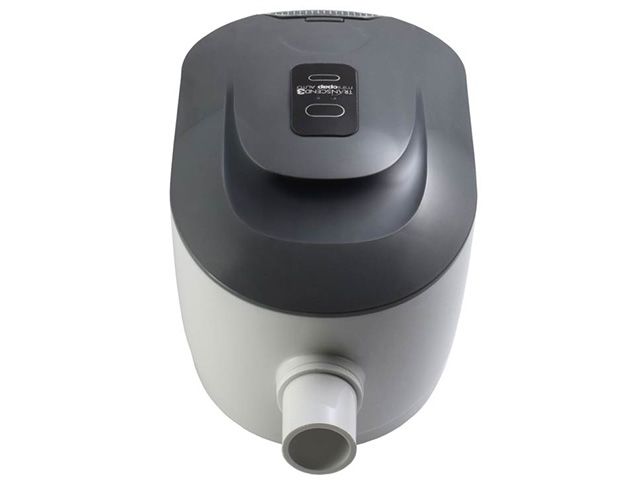
Highlights
- Dimensions: 7.5 x 3.7 x 3.7 inches
- Weight: 1.09 pounds
- Battery: external battery sold separately
- Warranty: three years
Pros
- Portable, compact, lightweight.
- Lots of power options.
- Airplane use certified.
- Ramp feature.
- Auto altitude adjustment.
- Low noise level.
Cons
- Battery options are sold separately.
Everything about this Transcend 3 CPAP machine is so good, we just had to talk about it. First off, it has FAA approval, which means that you can take in on your plane ride and use it. Then, it comes with a padded travel bag (which other brands don’t include in the base purchase).
It’s compatible with almost any tube or mask (unlike other models which limit your choices in terms of masks). It makes less than 30 dBA when operating, and the ramp feature can be adjusted to your liking.
By default, the device comes with a three-year warranty, but you can also opt for an extended warranty if you want to feel truly safe in regards to your investment. This compact and lightweight device can make a great travel companion.
You may be interested in: Best Pillowcase for Travel
Common CPAP-Related Issues & Fixes
Choosing a good CPAP machine can be troubling if you’re never dealt this kind of item before. To share some more knowledge on this matter, we’ve gathered some of the most common problems a buyer encounters when looking to shop for such a product.
Problem #1: I can’t get used to the forced air intake.
A lot of people that are using a CPAP machine for the first time have difficulties in adjusting to the forced air intake. To overcome such a problem, considering choosing a machine that has a ramp feature.
A ramp set will start off by delivering low-pressure air and will gradually rise to the output of your choice as you fall asleep. If you don’t know that the desired rate is, you can have a doctor to adjust that for you.
Alternatively, you can consult your doctor about a machine that adjusts the pressure by itself. For example, BPAP machines (short for bi-level positive airway pressure) can deliver added pressure when you inhale, and lower pressure as you exhale.
Problem #2: I constantly have dry mouth because of the CPAP machine.
People that have the habit of sleeping with their mouth open are subject to a dry mouth even if they don’t use a CPAP machine. With it, the mouth gets even dryer. Those of you that have such problems should consider a chin strap. This can keep the mouth shut and force the sleeper to breathe through the nose.
It also helps because it reduces air leaks for sleepers that use a nasal mask. For dry mouth, a full-face mask might also help. There are also CPAP machines with built-in humidifiers, and these can also address the dry-mouth issue.
Problem #3: I don’t know what mask to choose/I’ve chosen a mask that doesn’t suit me.
This is the most frequently encountered problem with CPAP machines, a mismatch between the sleeper and the mark. The best way to solve this problem is to work closely with your doctor and the CPAP mask supplier.
Choosing a face mask needs to take into consideration the shape of the sleeper’s face. That means that there is no universal right mask that could suit everyone. Since there are many choices available out there, it’s important to also know the features that each mask covered, so you’ll know how to choose the right one.
For example, there are masks that can cover the entire face, but they make some people feel suffocated. However, full-face masks are really useful for those that like to breathe through their mouth. Nasal pillow masks can be suited for people who read with glasses while wearing their CPAP mask.
Size is another crucial factor in purchasing a CPAP mask. Masks are normally available in different sizes, but they are also adjustable. Your CPAP supplier should be able to show you how to adjust your mask so it can stay in place, without any discomfort.
Problem #4: I can’t get used to wearing a CPAP mask.
Sleep is supposed to be our most comfortable time of day (or night), and even the slightest thing could disturb it. But how do you get used to wearing a face mask the entire night?
Consider buying a very uncomfortable, but extremely elegant pair of shoes that you have to wear at an upcoming event. You would first put them on to wear them for eight hours straight? No, you first put them on and walk around the house a few times, so that you can get used to them.
That’s pretty much what you have to do with a CPAP machine: try it on before taking it for a longer ride. The first step is getting used to having the mask on your face. Then, try to wear it with the device turned on, while you’re doing something like reading or watching it.
If you feel ready, use it during an afternoon nap. The goal is to use the machines now and then, and get acquainted with it gradually.
Problem #5: The device is making too much noise.
New and more advanced CPAP machine models are designed to be silent. But if, for some reason, your machine is making too much noise for you to sleep, it could be the cause of your air filter. When blocked or dirty, the filter can intensify the noise made by the machine.
Alternatively, you can ask your doctor/CPAP supplier to check the machine for any potential malfunctions. If there are no technical issues with the device, consider wearing earplugs when sleeping. Some people also consider the option of buying extra tubing, so that the machine can stay as far away from the bed as possible.
But, keep in mind that you can check the level noise output of a CPAP machine before you buy it. This is actually part of a lot of specification lists from most suppliers/manufacturers.
You may want to read: Best Mini CPAP Machines
CPAP & Sleep Apnea
One of the most common uses for CPAP machines is to treat sleep apnea. Short for continuous positive airway pressure, CPAP machines are often used to treat respiratory problems such as sleep apnea, which generally prevent people from resting properly during the night.
People who suffer from central sleep apnea have trouble breathing, due to pauses in breath, which on a severe level could be life-threatening. Normally, these breath shortages cause people to wake up even from a deep leep, so they can be very disturbing since they constantly interrupt one’s sleep and can even lead to insomnia.
Central sleep apnea is typically caused by strokes, narcotic medication, or congestive heart failure. There is also a condition called complex sleep apnea, when the pauses in breathing are caused the CPAP therapy itself.
There are people with sleep apnea that are required to undergo other types of therapies as well, such as bi-level therapy. This type of therapy implies the delivery of two pressures, one for inhaling and a lower one for exhaling.
Bi-level sleep therapy can sometimes be activated to compensate for the pauses in breathing of someone who suffers from sleep apnea. The timing of bi-level therapy inflates a person’s lung so that they may breathe the minimum required number of breaths required.
Another form of treatment is adaptive servo-ventilation. With this type of therapy, there is a much higher level of control over aspects such as airflow timing, volume, and breath rate.
You may want to read: Where to Buy a CPAP Machine?
You ask for them, they’re here: a list with the top five best CPAP machines for travelers, with the specification of interest for each of you. Let’s go!
Bottom Line
The best CPAP machines have some very different characteristics compared to a standard or a regular-sized one. They typically don’t measure more than 6 x 4 x 2 inches, and their total weight is around 1.5 pounds. Aside from the power adapter, portable CPAP machines can also be powered by batteries, either rechargeable or not.
What’s interesting is that travel CPAP machines, despite their compact size and feature restriction, are actually more expensive compared to standard devices. A portable CPAP machines will typically cost you anywhere between $400 and $900.
